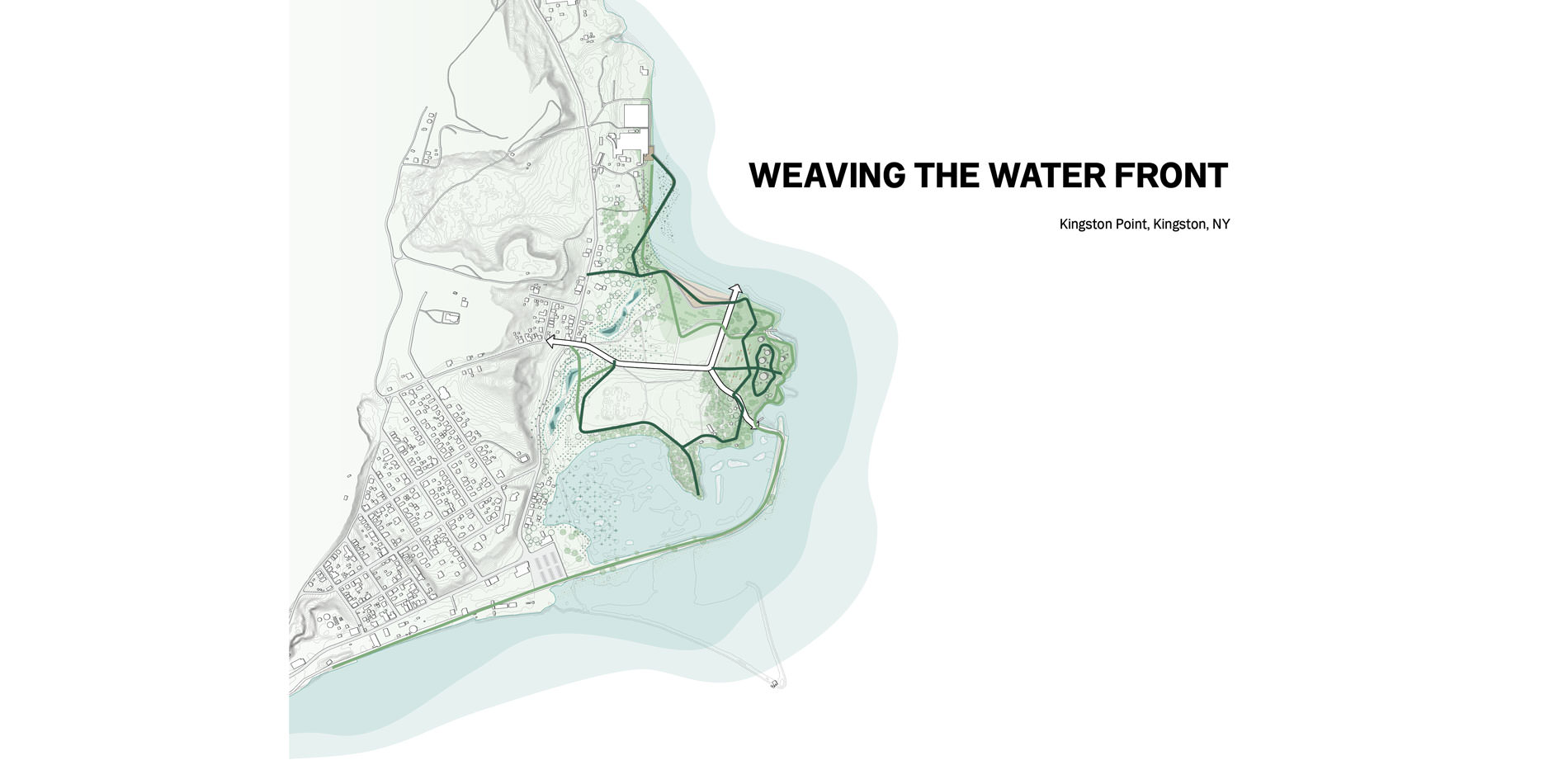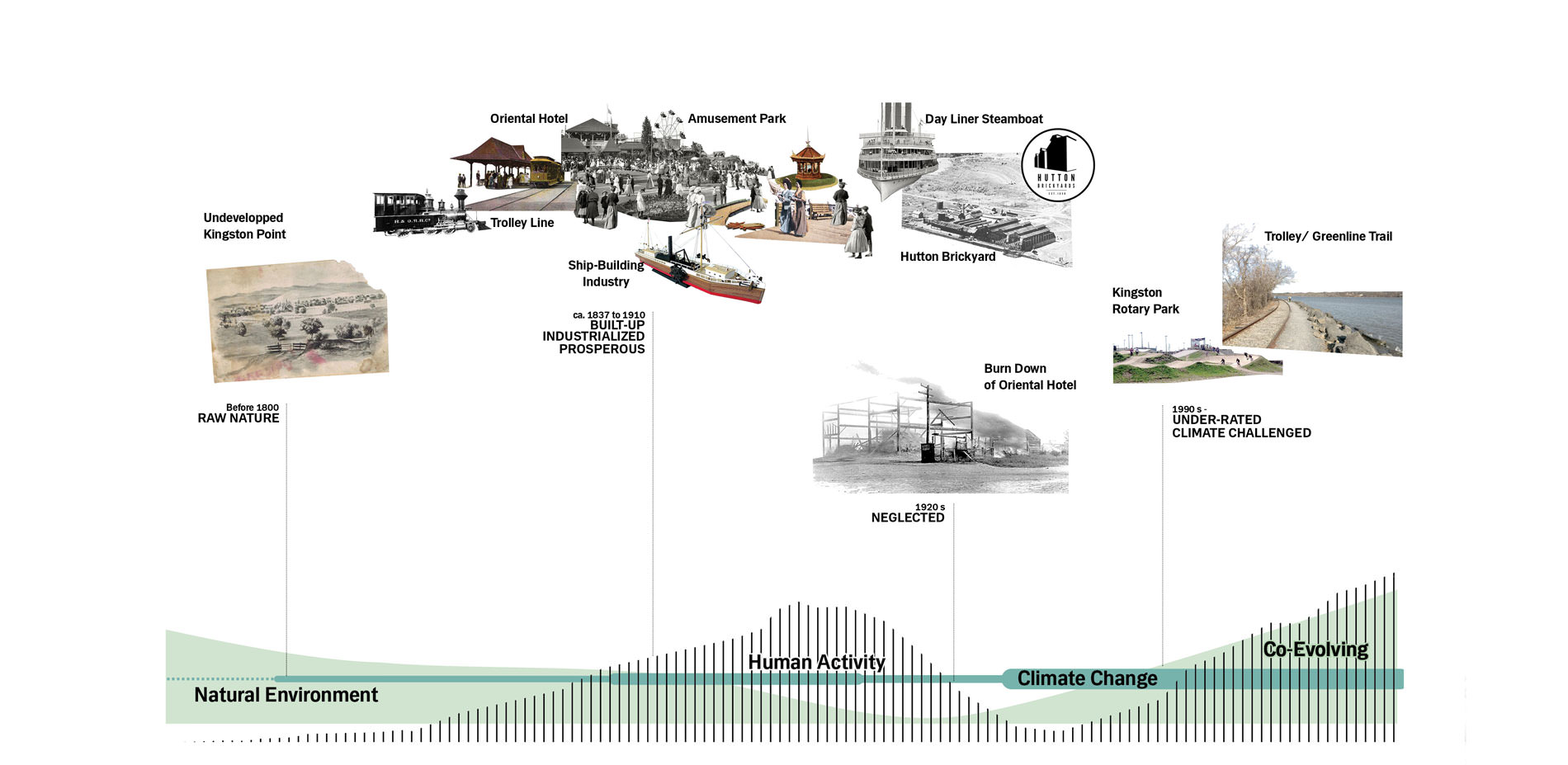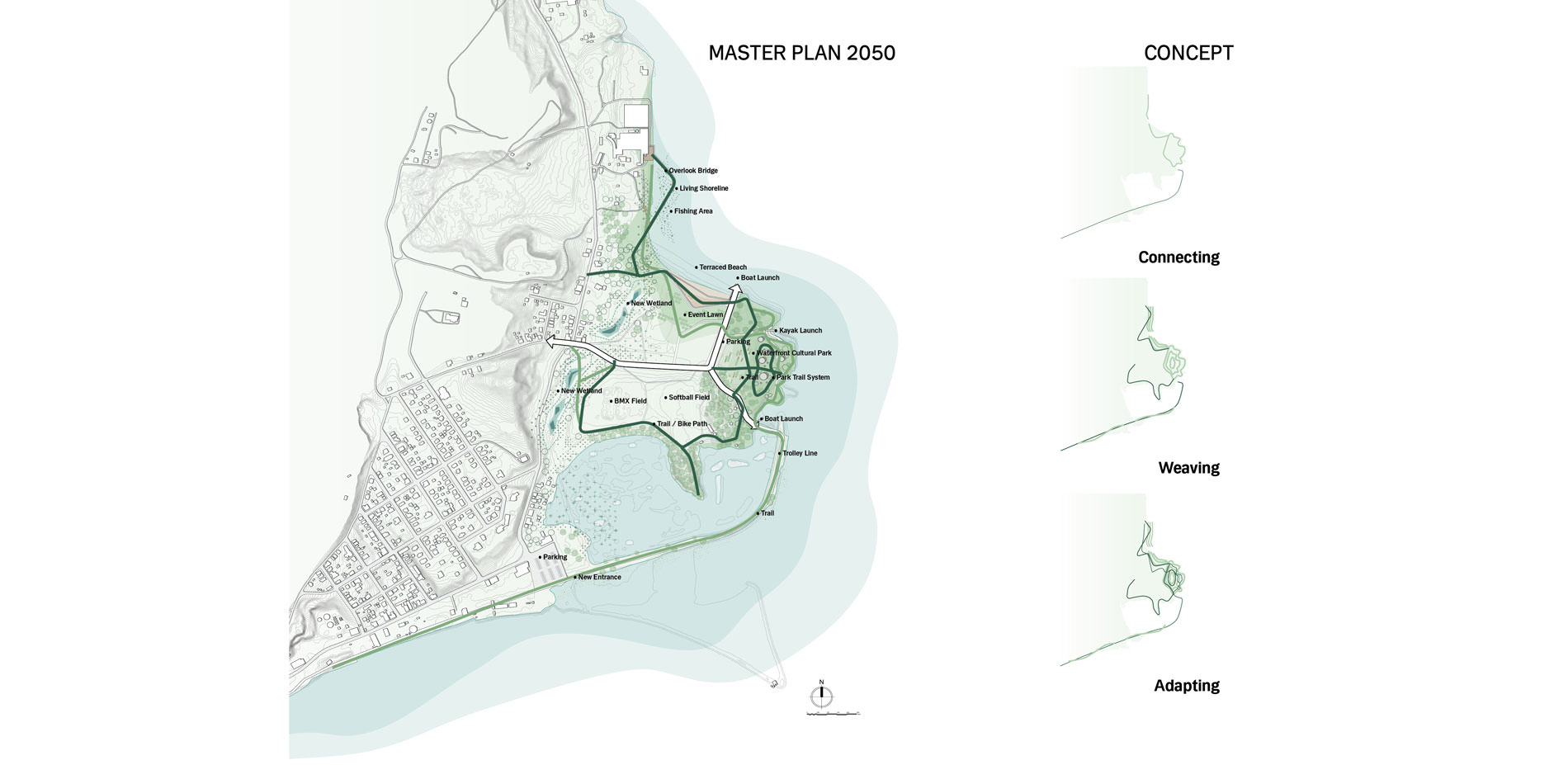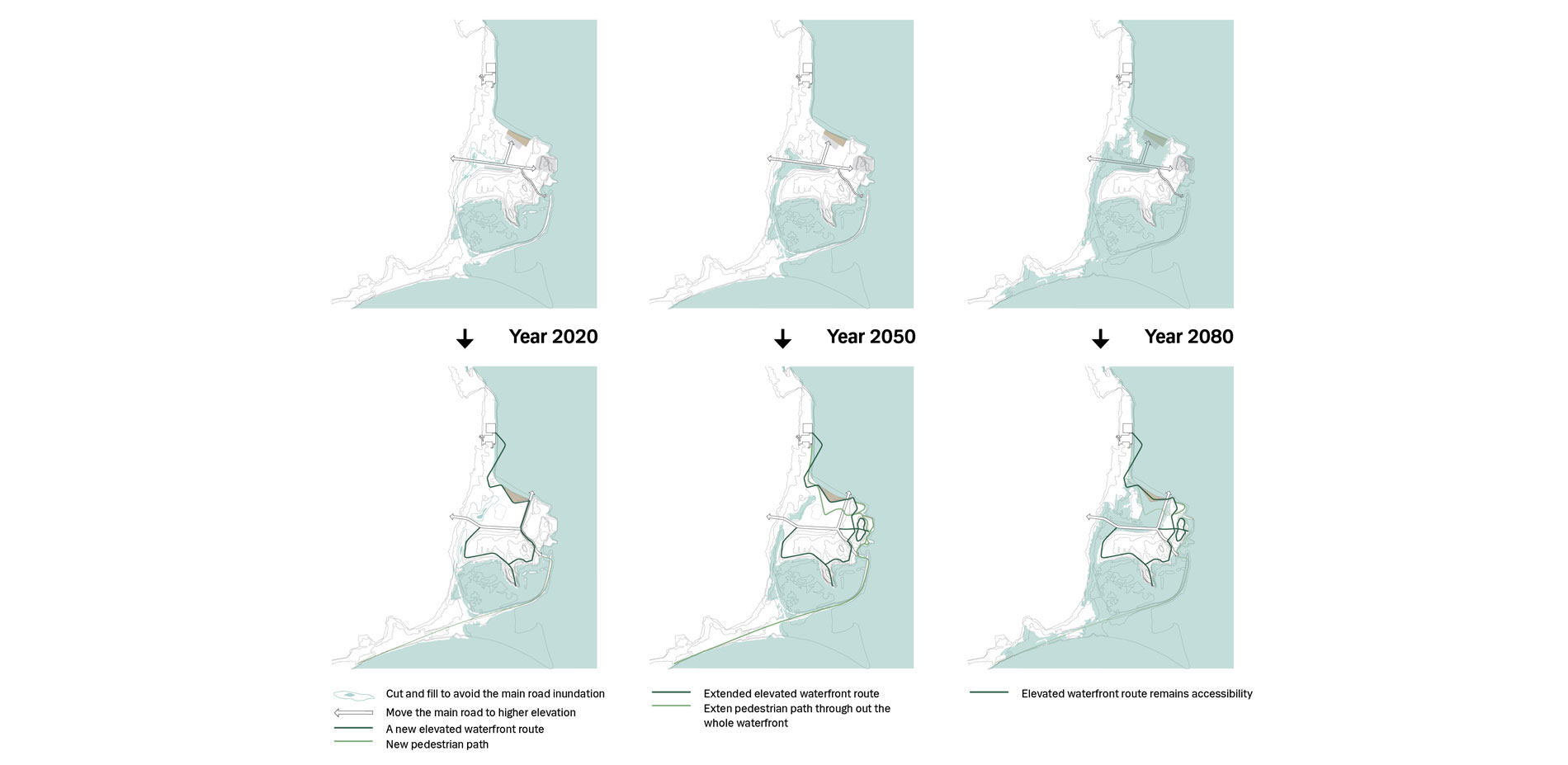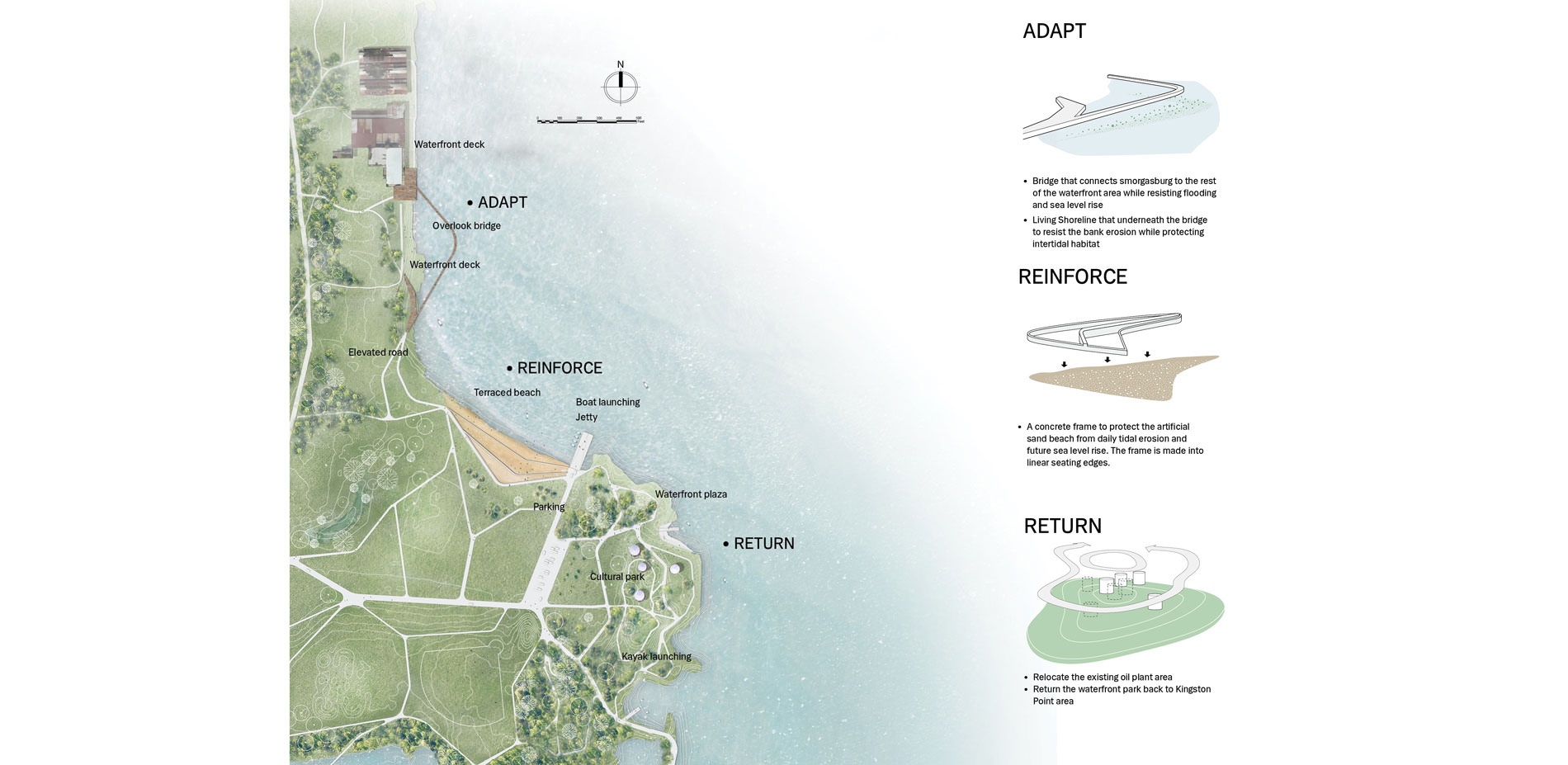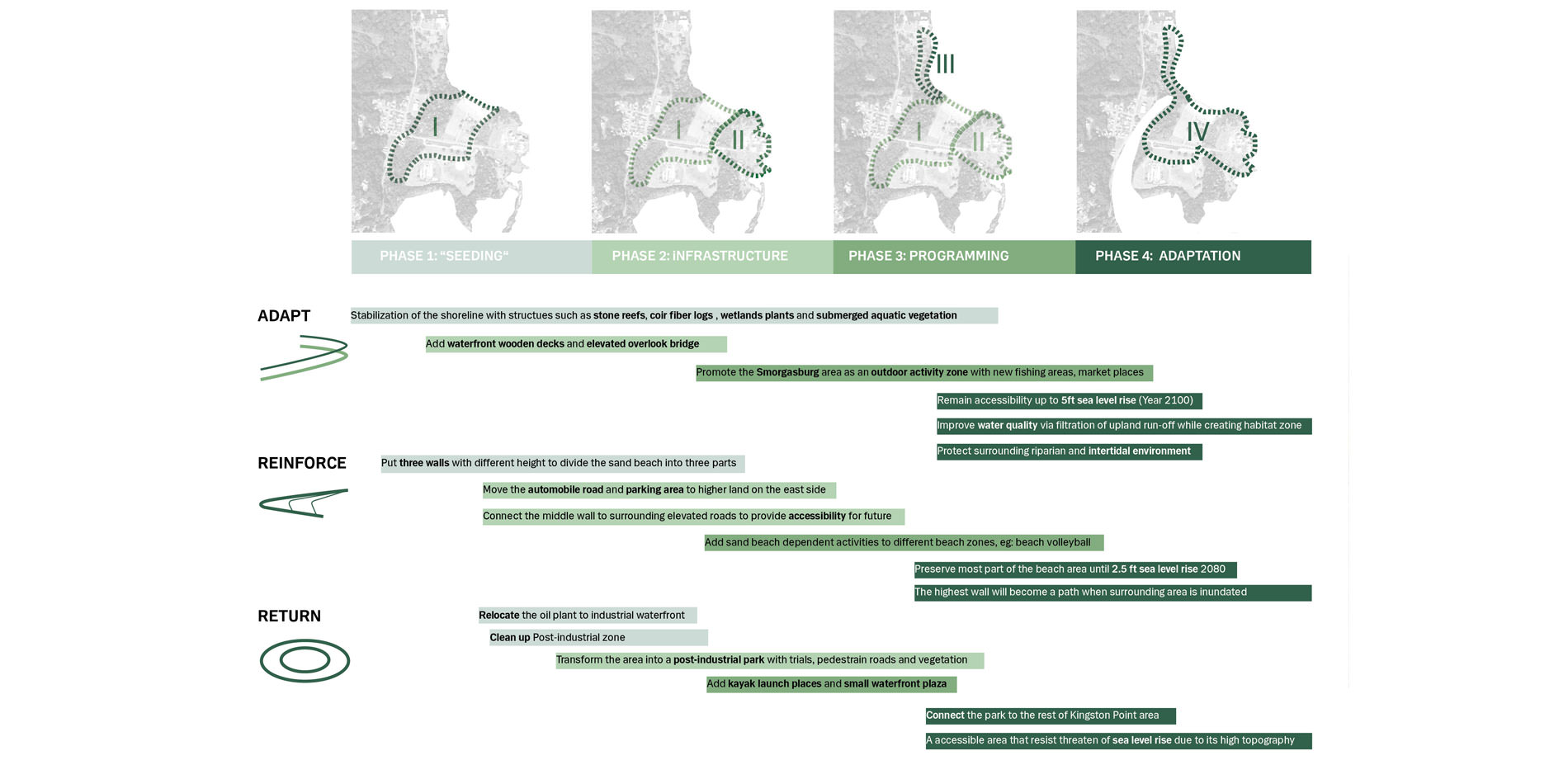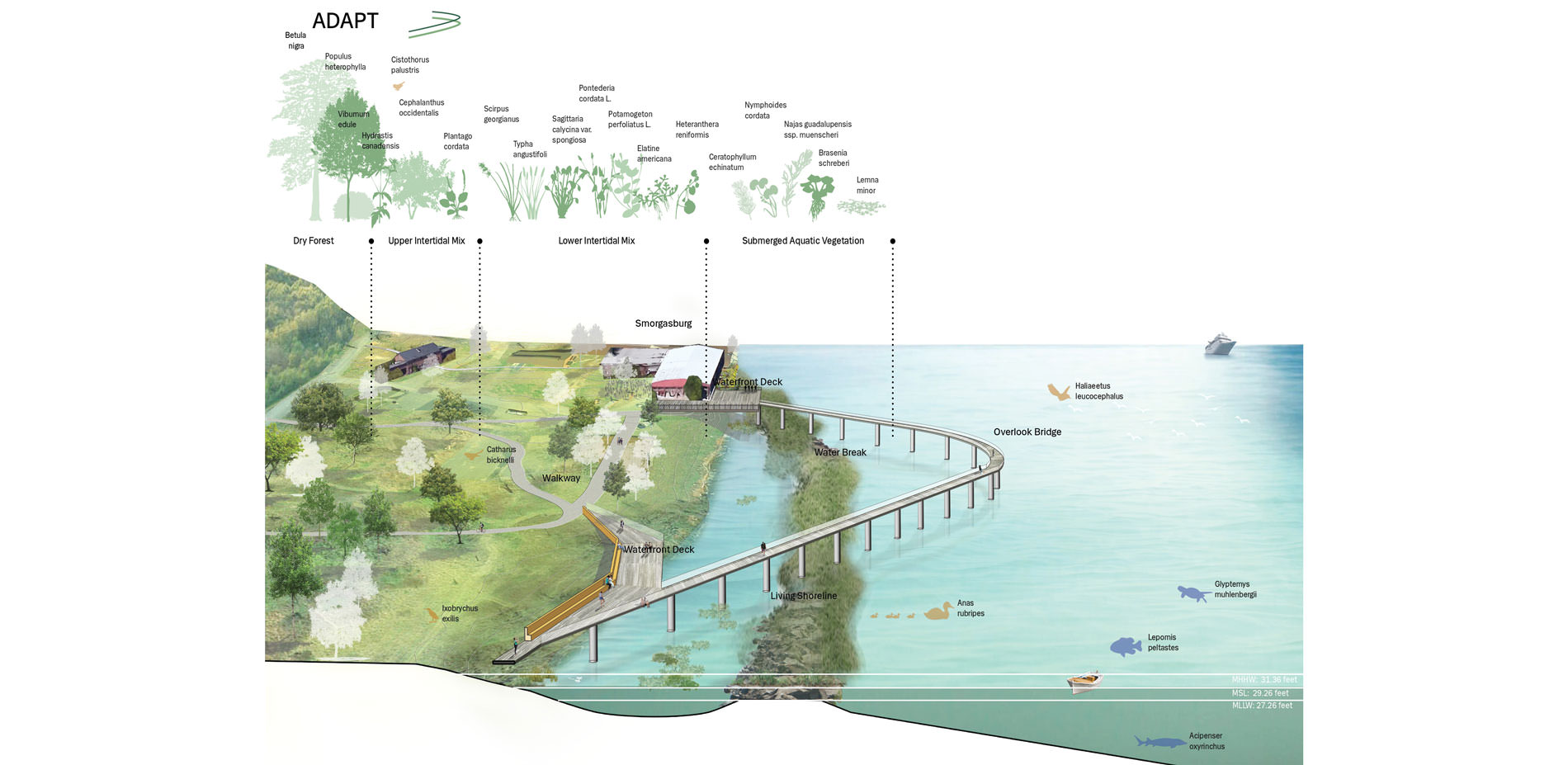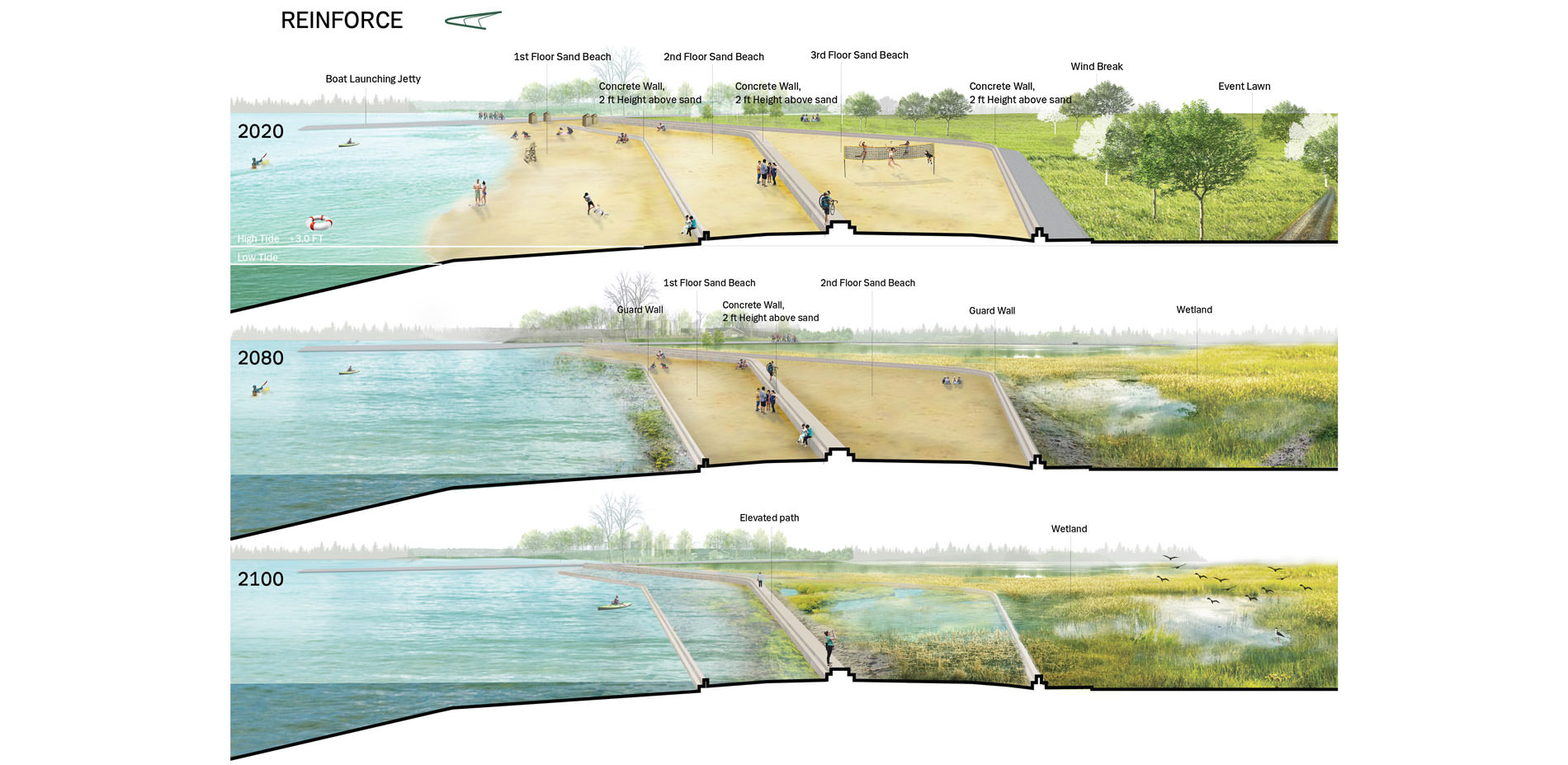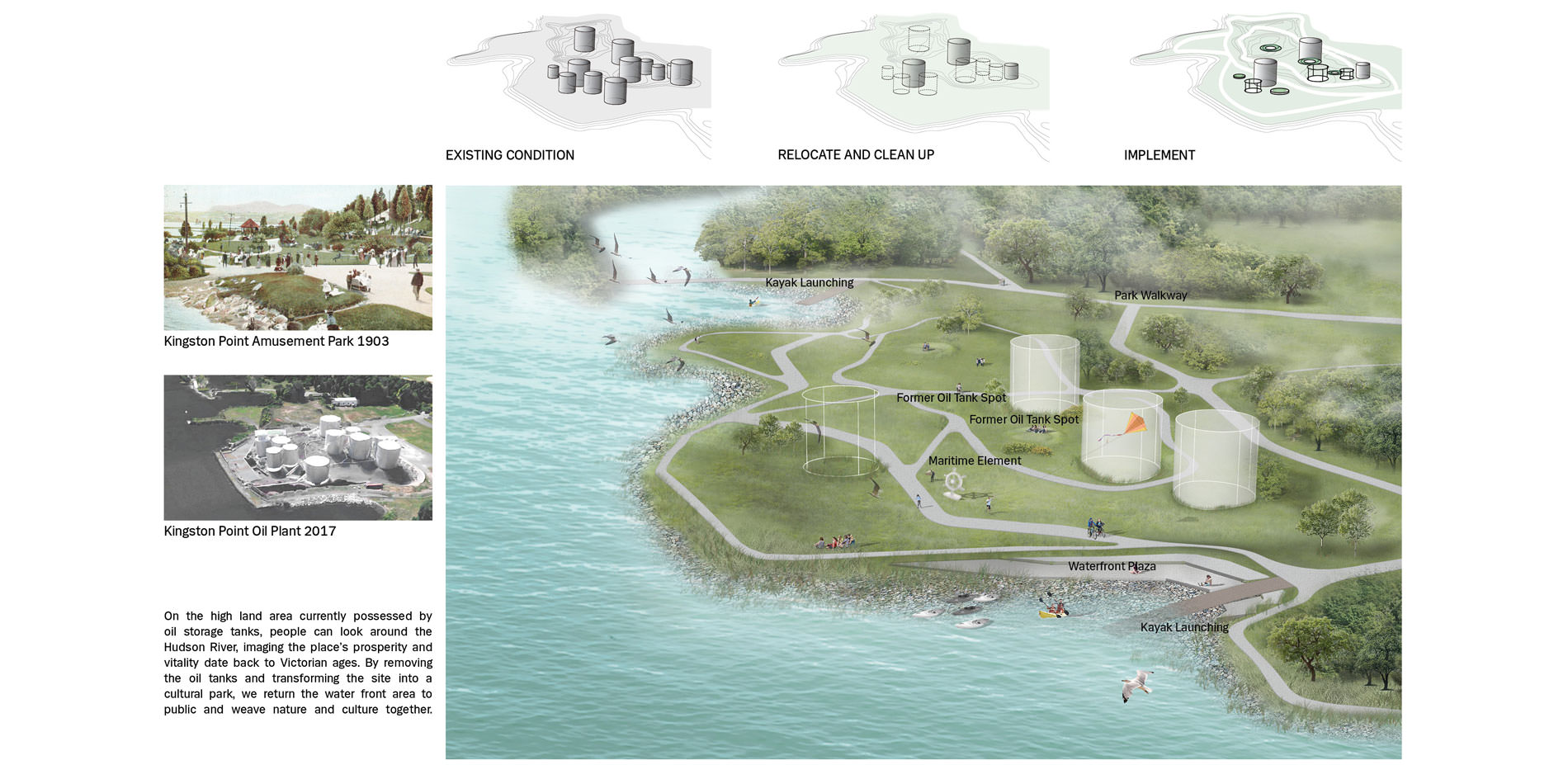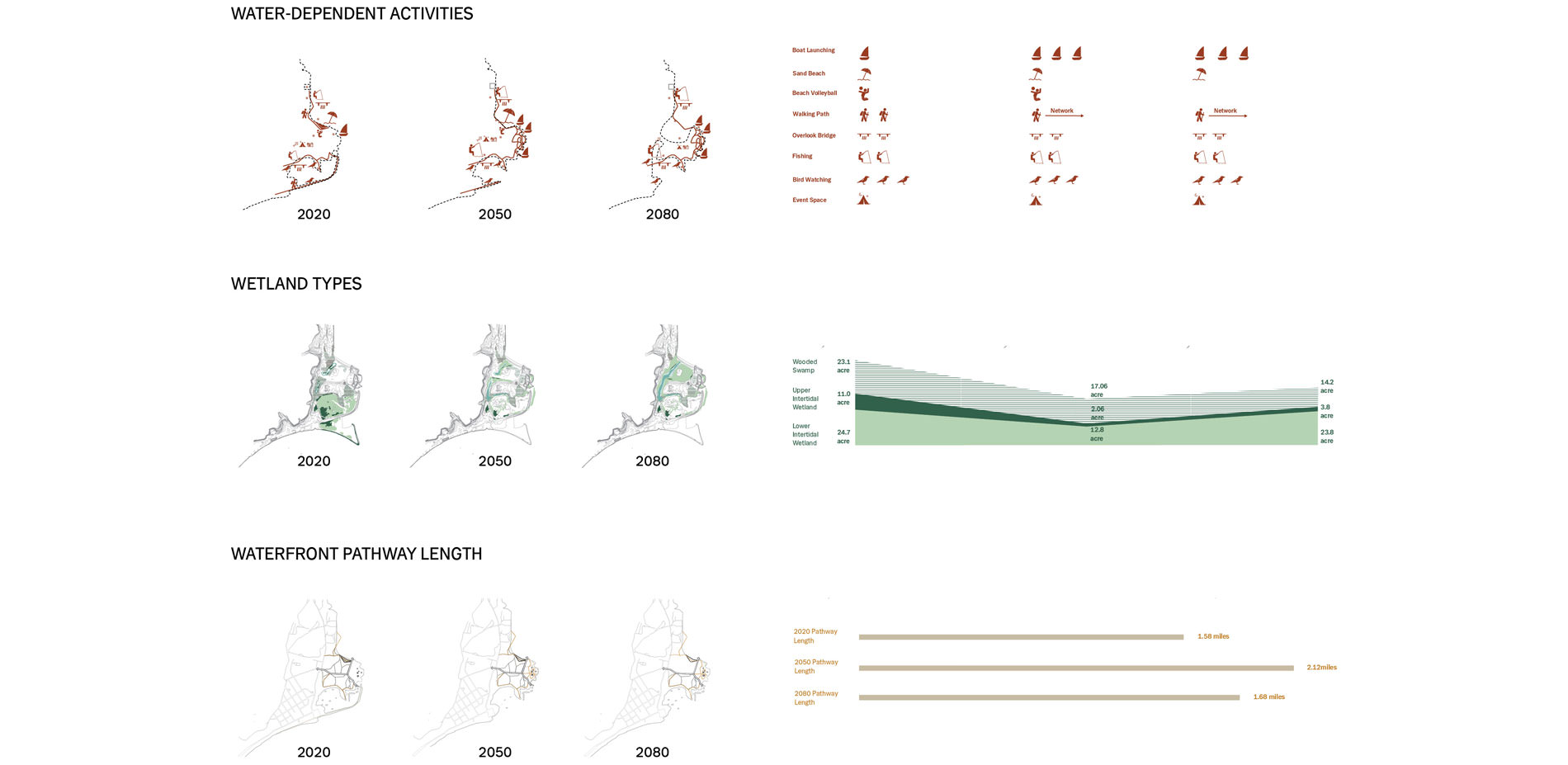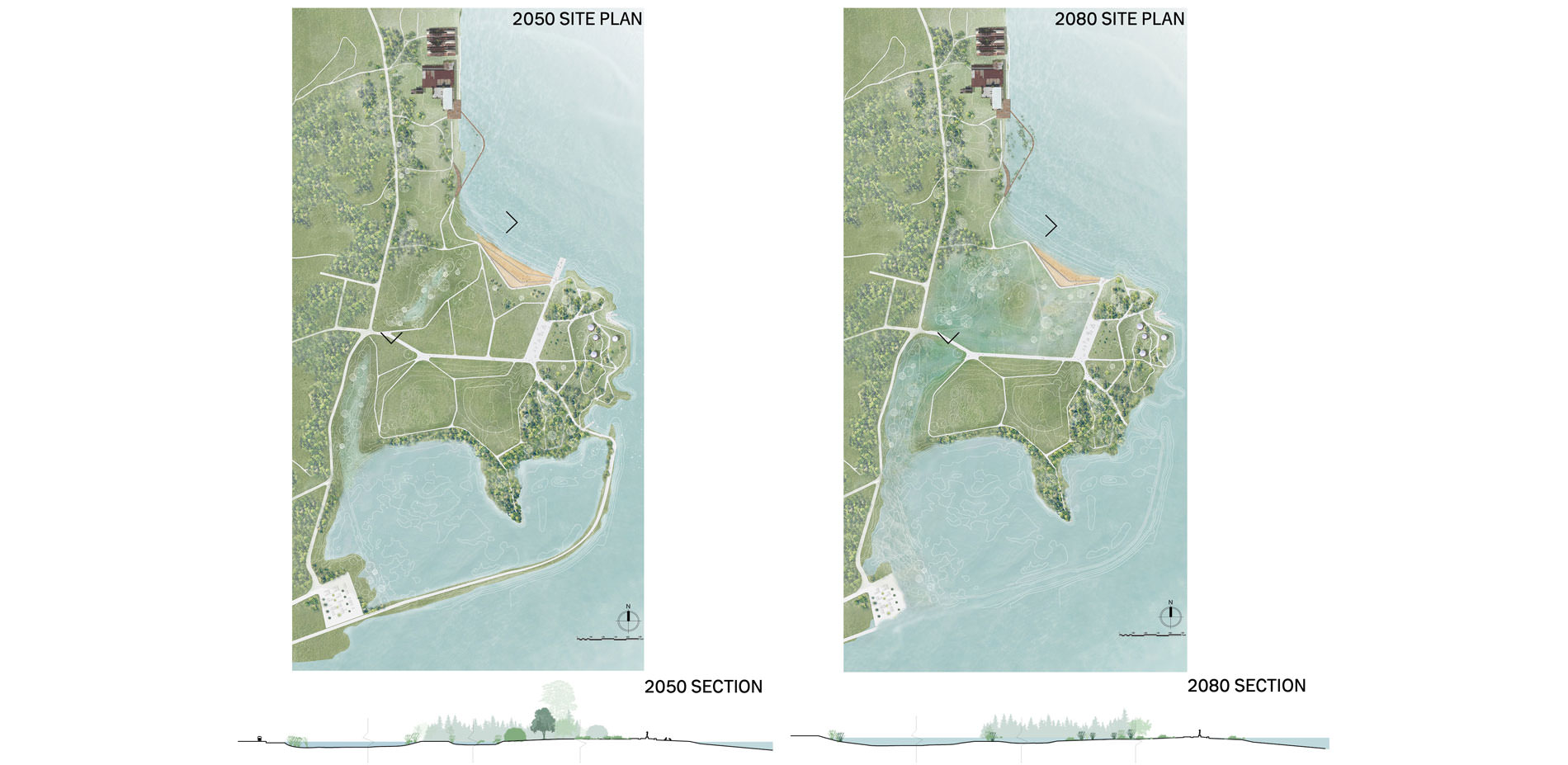Weaving the Waterfront
HONOR
General Design
Team: Hong Gao, Student ASLA; Luyao Kong, Student ASLA; Qianli Feng, Student ASLA | Faculty Advisor: Joshua Cerra, ASLA
Cornell University
A really smart project. It clearly explored three strategies and proposed a design that will work for 100 years.
- 2017 Awards Jury
PROJECT STATEMENT
For over four century, waterfront of Kingston Point have experienced vicissitude of both nature and culture providing spectacular beauty, rich history, and ecological resources. Today, however, these values are threatened by changing climate and will end up in decrement and fragmentation. It is the major task to make the waterfront vibrant and active through the next hundred years and beyond for generations.
The Weaving the Waterfront proposal revitalizes a 38.3-acre site along the Kingston Point by introducing original ideas of ADAPT, REINFORCE and RETURE. Focusing on the issues of climate resilient strategies, public spaces, and wetland restoration, this proposal coordinate nature, human and climate change with dynamic process and minimized earthwork.
PROJECT NARRATIVE
Introduction:
Being an important node of Hudson valley, Kingston’s waterfront was a nexus of river-based industry, transportation, commerce and maritime activity during the early 1900s. The prosperity shifted away and declined in the 1950s leaving many waterfronts neglected and polluted. In the last couple of decades, however, the Kingston waterfront has regained its ecologic and scenic value with constant efforts of environmental regulations.
Challenges and Chances Brought by Climate Change:
It is now at an important stage for Kingston’s waterfront to adapt to several new challenges. Today, Kingston’s waterfront is experiencing more and more frequent flooding caused by hurricane and tropical storms, especially when high tide period coincide with a few inches of rain.
In the long term, sea level rise will take away a large part of the waterfront and weaken the shoreline, which will also impact the types and structures of wetland habitats and thus influence the diversity of Kingston Point area. Serving as the only buffer zone between land and water, it is essential to ensure waterfront’s capability of coping with these changes.
Except for ecologic values, the scenic values and water-related recreational activities of Kingston’s waterfront are also irreplaceable. By weaving the climate-resilient programs and public spaces together properly, both ecological and scenic values are honored.
Adapt, Reinforce and Return:
There are three main weaving programs: ADAPT, REINFORCE and RETURN.
The program ADAPT happens in the north area of the site. A living shoreline is adopted to protect the waterfront from wave erosion and create more wetland habitats, especially for those threatened local species. To increase the connectivity and accessibility of the waterfront area between the beach and the historical attraction Smorgasburg, an overlook bridge reaching out into water will be built. REINFORCE locates in the middle of the site to keep and strengthen the existing beach that widely loved by locals and visitors. An idea of terraced beach is introduced to cope with rising sea level and tidal erosion with minimal change. With construction of three concrete walls and a tiny bit of elevation of the sand level, functions of the sand beach will be prolonged to 2080 until it’s finally inundated, while wetland will gradually take over the lawn behind the terraced beach and become dominant in 2100, turning the highest and widest wall into a elevated path to a functional pathway.
On the south area of the site, the program RETURN is aiming to weave the past and future, nature and culture by building a Maritime Cultural Park at the highland area currently occupied by oil storage tanks. Forms, elements and several individuals of the tanks will be kept and transformed to details and structures of the proposed cultural park. A pathway system is designed according to landform to provide better walking experience. New installations such as sculptures and land art works are also provided. As a result, the tiptop area with best view in Kingston Point will be returned back to public and prosperity of Victorian ages.
Conclusion:
By introducing original ideas of ADAPT, REINFORCE and RETURE, the proposal integrate Kingston’s waterfront to a vibrant and active place both in short and long time span to adapt to the anticipated effects of global climate change and people’s need for safe and stable waterfront space.
